The serval cat occurs all across sub-Saharan Africa. It is an expert hunter and a symbol of Africa’s wild.
However, it’s often forgotten as safari-goers seek leopards, lions, and cheetahs. With its beautiful fur and hunting prowess, a serval could be the premier highlight of any safari.
Unfortunately, servals have become an idolized pet in many countries. Owning one is legal in around half of the United States.
While some people believe they make great companions, these exotic cats are extremely wild and belong in the African wilderness.
Servals are the most successful hunters on the African savannah, yet their range is diminishing due to human contact.
These African animals have many more interesting traits and characteristics, including their habitat and incredible speed. For more information, here is everything you need to know about the serval cat.
Quick Facts About Africa’s Wildest Cats
To start off our story of Africa’s wildest cat, let’s take a look at some quick and interesting facts about servals.
This includes their speed, habitat, and plenty more.
What is a serval’s speed?

Wondering “what is a serval cat’s speed”?
For most of the day the serval lies quiet and undisturbed. Then suddenly it leaps almost three meters towards its prey. Or it jumps up a tree and escapes a predator.
These cats are incredibly agile and can change direction on a whim, using a zigzag pattern to escape their pursuers.
A serval’s top speed is approximately 80 km/h.
This is as fast as a lion and faster than a leopard. Like the cheetah, these cats have very long legs and strides, helping them to reach this top speed in a matter of seconds.
Do lions eat servals?
The serval cat’s only major predator is humans. Lions, leopards, hyenas, and wild dogs pursue these wild cats and compete with them for food and territory.
But do lions eat serval?
The answer is unclear.
However, younger individuals may fall prey to snakes or eagles.
What sound does a serval make?

These sublime hunters make a wide variation of sounds but are mostly silent. Most distinguishable is the low-pitched purr, a sound similar to that of a cheetah cub.
Servals complement purrs with hisses, grunts, growls and a very high-pitched chirp.
Serval cat social circles

Like most of its feline cousins, servals are solitary animals and shy away from any social interaction.
The only genuine bond is between a mother and her cub – they don’t have kittens out in the wild.
Rather than fight to decide territories, these cats will mutually avoid each other. Shows of aggression are very rare out in the wild, other than during a hunt.
African servals reproduction
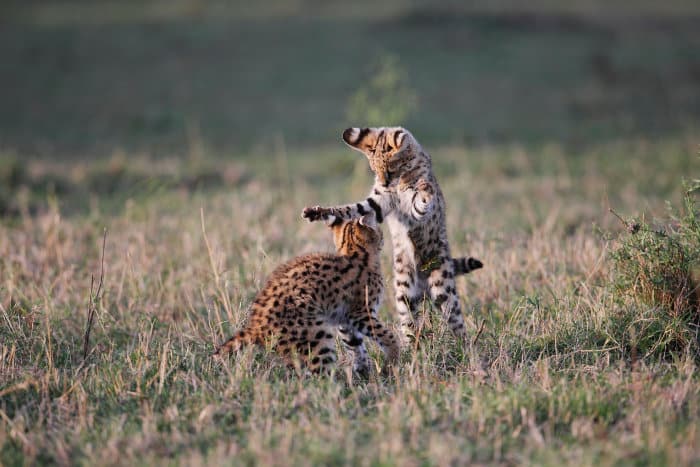
A newborn is blind and only opens its eyes after one to two weeks. The motherly bond lasts for 12 months as the cub grows in strength and develops hunting skills.
The cub starts hunting with its mother after six months before eventually departing for good.
Servals are sexually active from two years old, and females leave their estrus scent in urine. Males and females have overlapping ranges but only usually come into contact during mating.
Fathers don’t play any part in bringing up cubs. Like male lions, they hunt and kill their male offspring, so mothers must regularly move their cubs to new dens.
Serval cat diet and day on the savannah
Servals are out exploring during the day and night, although it is very rare to see them out in the open. They move slowly, creeping through the high grass, staying inconspicuous at all times.
In a single day, a serval could roam up to 4 km, usually sticking to core hunting areas within its established home range.
On a successful day, the cat will hunt anywhere from 10-20 different meals. However, servals are also prey to other cats, especially wild dogs and hyenas.
What is a Serval Cat – Facts About Appearance

This slender cat can be easily mistaken.
When seen from a distance it can be mistaken for a baby leopard, due to its spotted fur and lean frame. Nevertheless, these wild cats are vastly different.
Serval cat size
Look specifically at the legs. Servals have the longest legs (proportionally) of all Africa’s cats, whereas leopards have shorter legs and a much longer tail. In comparison a serval’s black-tipped tail is just 30-40 cm long.
Africa’s most successful hunter measures up to 70 cm and can weigh up to 18 kg. Most of these cats are in the 10-15 kg range. This is larger than the African wildcat, a species that doesn’t have the same spotted fur.
Serval cat ears
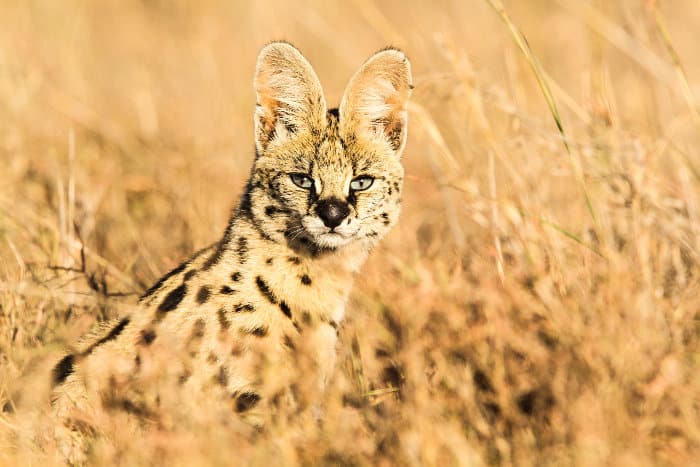
Above a serval’s small head is a protruding pair of ears.
In fact, their ears are the largest of any wild cat relative to the size of its body.
These oversized ears provide them with their keen sense of hearing.
Best Serval Hunt Facts

Lions typically succeed in one in six or seven of their hunts. Leopards and cheetahs are a little more efficient, with one in three considered to be an excellent ratio.
Servals are successful with half of their hunts! That means their hunting success rate is better than any of Africa’s top predators other than the African wild dog.
These remarkable cats lie deathly still in the grass and use their exceptional hearing to locate prey. Sometimes they will also stalk this prey. But often, they lie and wait for the prey to unwittingly come closer.
Jumping three meters above the ground, the serval attacks, landing feet first on its quarry. With a single blow from the forepaws, it incapacitates its prey. Then a bite to the neck or head finishes the job.
Typical serval hunting prey
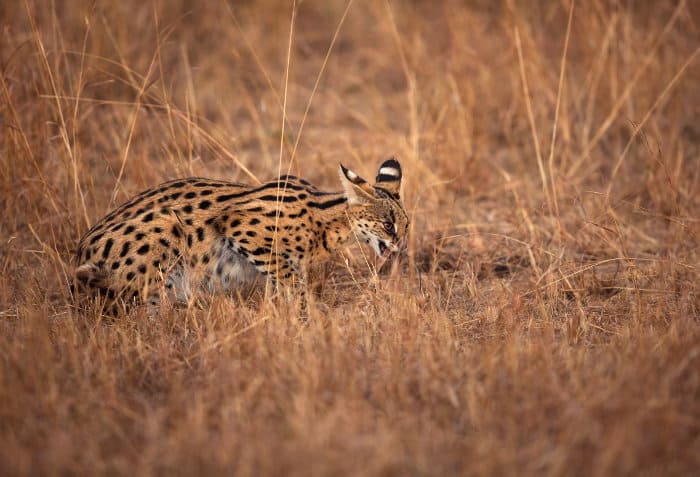
Often a serval immediately swallows its kill, especially if it is a vlei rat or African grass rat. Rodents make up the majority of its diet, and most of these weigh under 200 grams.
Yet this hunter doesn’t just pick on the small and weak. Servals also attack snakes, chasing them along the ground and eating them while they are still slithering off.
Young antelope, especially duiker, are another part of their diet. These large kills are hidden away in the grass for eating later.
Hunting through hearing also enables a serval to catch birds, with that three-meter jump helping them pluck flying prey direct from the air.
How do servals hunt and why are they so good at it?

Part of their secret lies in stealth.
Lions are conspicuous and find it difficult to hide. Cheetah may be the world’s fastest animal, but they must still creep very close before pouncing. Servals are smaller and easily blend into the grass.
Like leopards and lions, these wild cats have an exceptional strength to size ratio. Their leap is the most impressive – relative to its size – of all cats, and they can carry off prey heavier than they are.
But like all skills, practice makes perfect. A lion pride eats once every three to four days. A serval hunts over 20 times every single day. They are a continuous threat and will attack during the day and night.
Just think about this – wild serval cats are hunting prey 80 times more often than lions. They are Africa’s most successful hunting cats. Yet some people think they can tame them as pets!
Can You Keep Servals as Pets

Wondering if it’s possible to have a serval cat pet?
Well, It’s a beautiful and exotic cat that comes from Africa. And people from around the world like to own beautiful and exotic things from Africa, such as rhino horn, elephant ivory and serval cats.
Why?
Pet websites suggest that these animals can be very affectionate but difficult to train.
Difficult to train?
Well, duh, they are wild animals.
We find it confusing – why would anybody want to take a cat out of its natural habitat for purely personal pleasure?
Serval cat pets are not rescued but poached from Africa. Rhino, elephant, a beautiful cat… when it comes to poaching and hunting, the crime is the same regardless of the animal.
While it is possible to buy a serval from a domestic breeder, it will still be a wild cat.
Their wild behavior does lead to some unfortunate situations for the owner. Servals will pee all over a house to mark their territory, including peeing on their owner. They are also known to repeatedly slap and hiss at children.
Can African servals kill you?

Servals are expert predators capable of hunting prey many times their size.
There are no reports of them killing adult humans, but they are very capable of killing babies and small children.
What is the cost of owning a serval?
Owning a serval has a cost attached to buying the cat itself. The bigger cost is to the serval. Having a pet involves taking a wild African cat, introducing it to a captive environment, and depriving it of the opportunity to breed.
There is a large market for savannah cats that are descendents of the serval. The price of these kittens depends on how much wild serval is bred into the cat. Kittens with 65% wild serval cost over USD 15 000.
Mythical History of the Egyptian Serval Cat

When some think of the serval, Egypt may come to mind. This is because 21st-century pet owners aren’t the first to find these cats hypnotizing. People have traded these beautiful cats since the time of Tutankhamun.
Roll back 2500 years and servals were exotic gifts in Ancient Egypt. They were often poached in sub-Saharan Africa and taken across Sudan, where Egyptian rulers and landowners idolized them.
The cat was later traded with Europe. It became the symbol of a distinguished Sicilian family and the Italian island of Lampedusa.
Really, what is with everyone stealing wild animals from Africa and passing them off as their own?
Serval Cat Habitat and Conservation
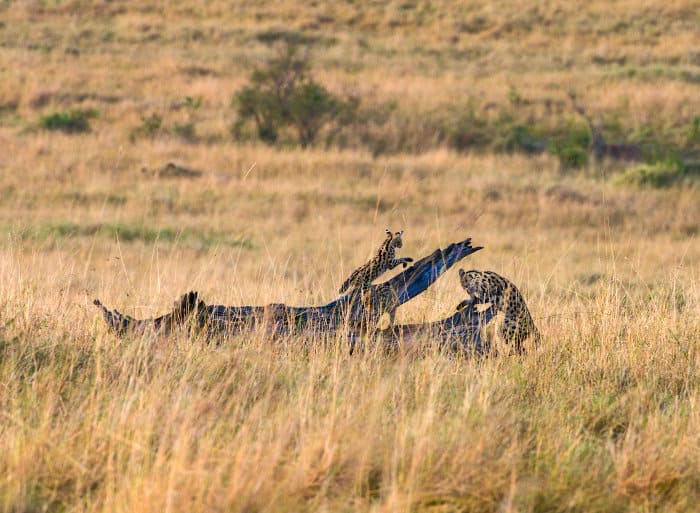
Servals have evolved to be one of Africa’s most widespread predators. They occur in Morocco and Tunisia, along with large areas of West Africa, East Africa and Southern Africa.
They prefer a habitat that provides excellent cover, usually with tall grass and reeds. Proximity to water is also important, and it is rare for a serval to den more than 5 kilometers from a permanent water source.
However, servals can thrive in a mix of habitats, including wetlands, savannah, moorlands, grasslands, gallery forests, and woodlands. People have even spotted them 3800 meters up Mount Kilimanjaro as well as in the Congo.
Threats to African serval populations
Although widespread across the continent, their exact population is unknown. Their status is “least concern” on the IUCN red list, yet their stability is also a mystery.
Poaching and hunting are major threats. People capture servals alive for the illegal pet trade and hunt them for their spotted fur, which is sometimes sold as baby leopard.
Chickens and turkeys are no match for this impressive predator. When the cat comes into contact with a farm, they hunt quickly and efficiently.
This makes them a hunting target for farmers. Due to these reasons, servals are now extinct from the south of South Africa.
Other conservation threats include habitat loss and habitat degradation. Naturally, as these animals lose their habitat and food source, their population will decline.
Help Preserve Serval Cats
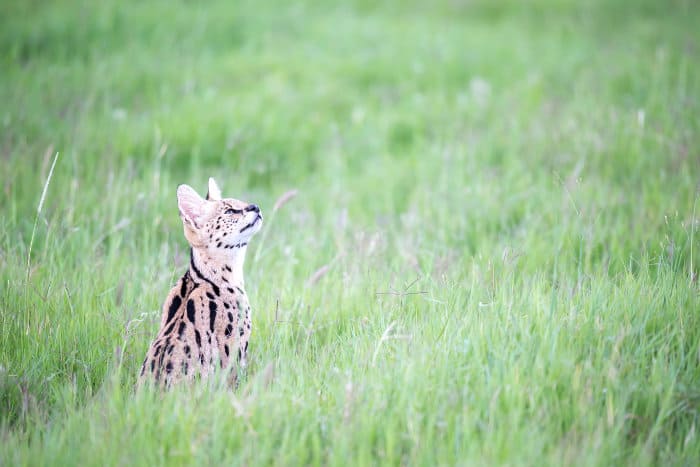
These cats are under threat, like so many of Africa’s most enchanting animals.
There needs to be a total ban on owning servals as pets, rather than the current partial ban.
You can contribute to their survival by going on safari. You should not encounter servals in the home but in the wild – where they belong.
Luckily, servals are present in most of Africa’s national parks and game reserves. Small and secretive animals are hard to spot, but they make for a good focal point, especially during a night time game drive.
Even just to witness one move fleetingly through the grass impresses their wild character and need for preservation.
Happy safari!


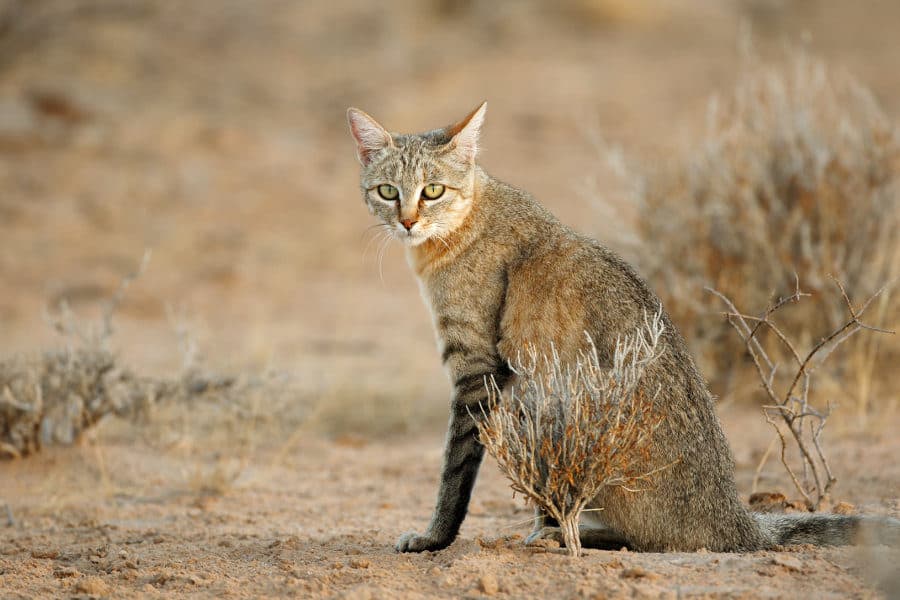

Hi all,
I really enjoy the news and the curiosities you share here!
I only would like to say something regarding this article about servals: I found it extremely interesting, but I was wondering why you gave so much space to information about the costs of owning them as pets, and about the difficulties of training them…?
I mean, you also made the point that they are not pets, so maybe it would be nice to see that those kind of information are not even considered or, even worse, shared.
Anyway, it’s just my thought and I still appreciate your articles. It’s just that I’m an animal caretaker (looking after primates who suffered from having being owned as pets and that are traumatized forever) and most important an animal lover, and I really would like not to see these kind of info anymore…
Kind regards,
Giulia
Hi Giulia,
Thanks for your comment, you make an important point here.
The main intention for discussing all this is to dissuade people from wanting servals in the first place.
That being said, we could definitely improve our communication on the matter, and we will take this into consideration in our next update.
Thanks again for your input, and keep up the fab work you do with animals.
All the best,
Michael